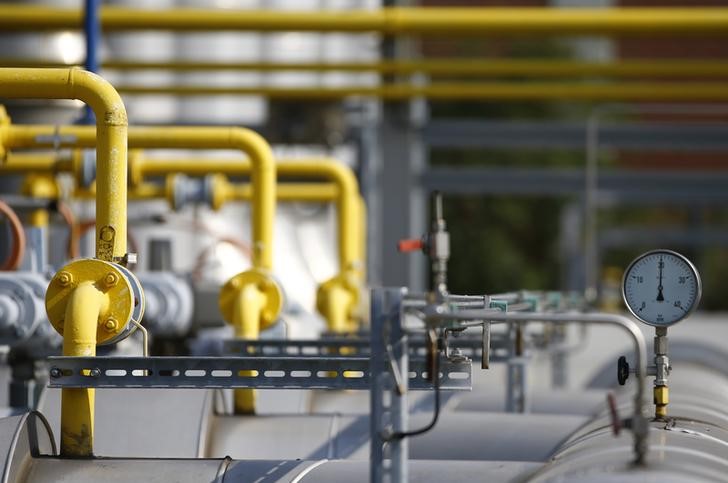Investing.com - Natural gas prices edged higher on Friday, as updated weather forecasting models predicted a return to colder weather in the coming weeks.
On the New York Mercantile Exchange, natural gas for delivery in January inched up 0.5 cents, or 0.23%, to close the week at $2.186 per million British thermal units on Friday.
Updated weather forecasting models showed that temperatures were expected to be below normal across most of the contiguous U.S. starting from mid-December. However, gains were limited as market players were hesitant to make large wagers until weather patterns show more significant cooling.
Natural gas futures have closely tracked weather forecasts in recent weeks, as traders try to gauge the impact of shifting outlooks on early-winter heating demand. The heating season from November through March is the peak demand period for U.S. gas consumption.
Despite Friday's gains, natural gas dipped 2.6 cents, or 1.17%, on the week. Prices of the fuel typically rise ahead of the winter as colder weather sparks heating demand. But warmer temperatures throughout the autumn limited demand, underlining concerns over a deepening supply glut and driving prices to multi-year lows near $2 per million British thermal units at the end of October.
Meanwhile, the U.S. Energy Information Administration said that natural gas supplies in storage fell by 53 billion cubic feet last week, compared to expectations for a decline of 51 billion.
That compared with a build of 9 billion cubic feet in the prior week, a withdrawal of 22 billion cubic feet in the same week last year, while the five-year average change for the week is a drawdown of 50 billion cubic feet.
Total U.S. natural gas storage stood at 3.956 trillion cubic feet, 13.7% higher than levels at this time a year ago and 6.2% above the five-year average for this time of year.
Last spring, supplies were 55% below the five-year average, indicating producers have more than made up for all of last winter’s unusually strong demand.
Inventories of the gas are typically built up during the warm summer months and then drawn down in the winter as cold temperatures increase demand for the fuel.
The EIA's next storage report slated for release on Thursday, December 10 is expected to show a withdrawal of approximately 60 billion cubic feet for the week ending December 4.
That compared with a decline of 51 billion cubic feet in the same week last year, while the five-year average change for the week is a drawdown of 79 billion cubic feet.
Elsewhere on the Nymex, crude oil for January delivery settled at $39.97 a barrel by close of trade on Friday, down $1.74, or 4.17%, on the week, while heating oil for January delivery slumped 0.74% on the week to settle at $1.342 per gallon.
